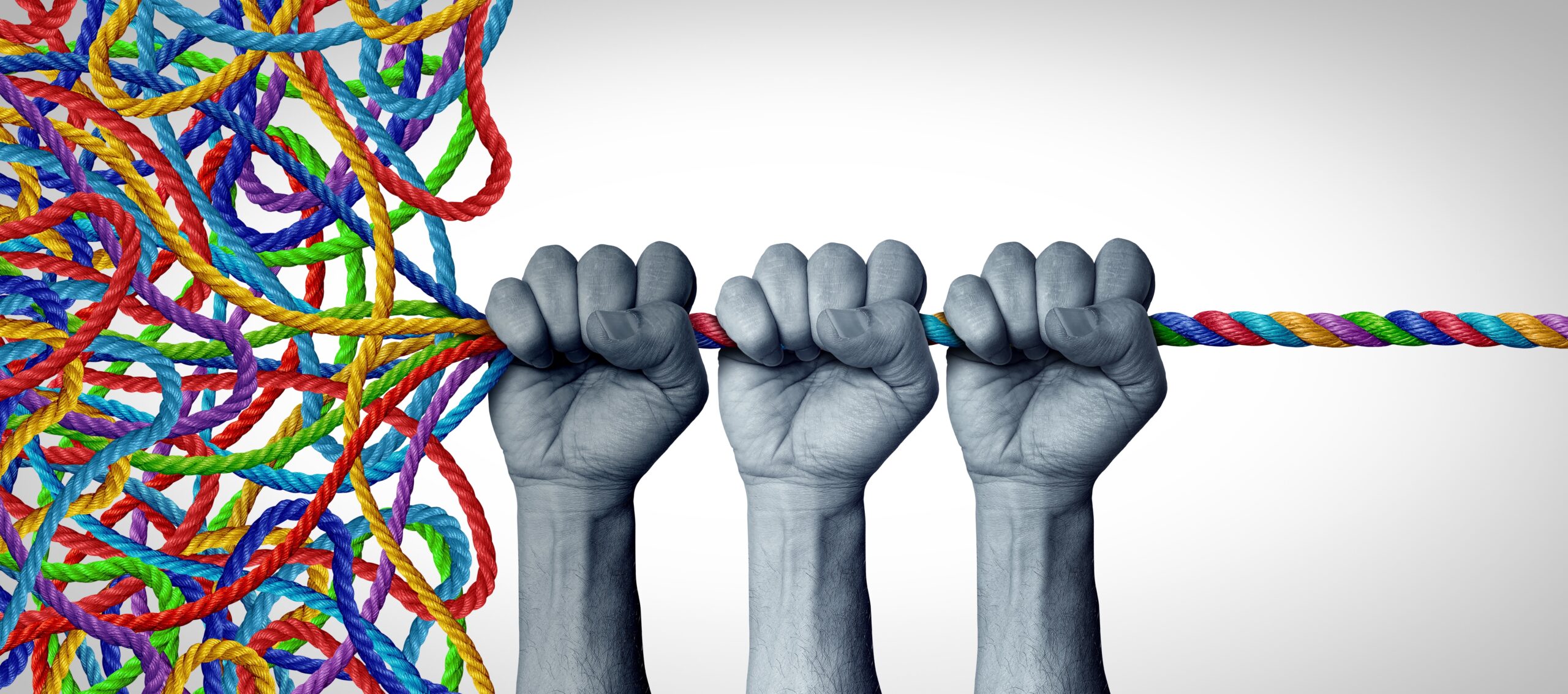Confidentiality of research data: revisiting l’Affaire Maillé
It is likely the tsunami of research triggered by the COVID-19 pandemic will generate its fair share of conflicts related to the confidentiality of research data and intellectual property.

The confidentiality of data obtained as part of a research program is generally considered inviolable by university researchers. However, the recent and eventful “Maillé affair” has shown the fragility of this right, and the difficulty of having it sustained. The publication of the book entitled L’Affaire Mailé offers us the opportunity to recall the legal obstacles that can confront researchers and to draw some lessons.
The author, Marie-Ève Maillé, had studied, as part of her doctoral thesis project, the social impacts of the Érable wind turbines project in the Centre-du-Québec region. In the fall of 2015, a few years after completing her doctorate, she agreed to testify as an “expert witness” in the class action filed by citizens against the project. Her doctoral thesis was transmitted to serve as an expert report and thus form part of the evidence; her thesis thus became a document that the lawyers of the company responsible for the project could pick through in order to identify the people who had communicated with her in confidentiality.
Summoned by a court order forcing her to hand over her research documents and field notes, including the list of people she had interviewed, Dr. Maillé decided to challenge the Court’s decision to preserve the confidentiality of her research data – not without having previously tried to withdraw her thesis from the evidence, but in vain. This confidentiality was at the heart of the dispute, because in order to carry out her research, she had promised that the discussions would be confidential and that the names would not to be disclosed in the thesis. This confidentiality requirement is also part of the ethics protocol of the three Canadian granting councils that the universities are responsible for applying.
Although a decision rendered on May 31, 2017 by Quebec Superior Court Judge Marc St-Pierre concluded that the criteria to ensure the confidentiality of the information obtained by the researcher had been met, the issue of confidentiality of the data resulting from this research remains relevant; Dr. Maillé’s account shows how a researcher can be destabilized by the legal process. Other litigation emphasizes the importance of remaining vigilant in the face of a legal system that sometimes seems to favour organizations better equipped than ordinary citizens to use the justice system to their advantage. It is then up to the judges to stand for and ensure a fair trial.
The issue of confidentiality is not new and was the subject of an important article published in the McGill Journal of Law and Health, entitled “Researcher-Participant Privilege, Confidentiality, and the Jailhouse Blues” by professors Karen Drake and Richard Maundrell, an essential piece of writing for a good understanding of the issues presented here.
An eventful story
Dr. Maillé’s little book is engaging. Indeed, reading the L’Affaire Maillé does not leave one indifferent and makes one realize the extent of the possibilities offered to lawyers, in the name of a “full defense” to obtain information considered otherwise confidential.
Superbly well-written in tight, lively prose, her testimony reads almost like a detective novel. The very short chapters reflect the continual twists and turns of the story and the author’s moods communicated in a spirited style. The story also makes the reader laugh with its moments of humour and surprising serenity; the author does not hide the fact that she displayed a certain naivety. The tone, sometimes intense, is always frank and respectful.
We must applaud and admire Dr. Maillé’s daring and courage, and her book is a gripping testimony to this. Even better, it teaches us the importance of being prepared, aware of the case law and the rules of the game in the legal world. The conclusion of the book – like the afterword written by Bogdan Catanu, a lawyer who later intervened in Dr. Maillé’s defense – is enlightening. Mr. Catanu shares some lessons for those who must engage in combat, as Dr. Maillé bravely did, and aims to better equip the gladiators who will have to enter the arena.
Admirable for her persistence and courage, Dr. Maillé received a lot of support at the end of her tribulations. Unfortunately, these kinds of confrontations are likely to happen again, as demonstrated by the example of criminologists Chris Bruckert and Colette Parent (Parent vs R) of the University of Ottawa in the trial of sex worker Luka Magnotta in 2013. Bruckert and Parent refused to provide the police with a transcribed and anonymized interview they conducted with Mr. Magnotta in 2007, citing inside information. The Superior Court of Quebec rejected the search warrant request. A few years earlier, there was the case of hematologist Nancy Olivieri at the University of Toronto who raised the issue of the possible ineffectiveness of the drug deferiprone for treating a blood disease. Dr. Olivieri was sued by the pharmaceutical company for allegedly breaking a confidentiality agreement. It is likely that the tsunami of research work triggered by the COVID-19 pandemic will produce its share of conflicts related to the confidentiality of research data or intellectual property.
Faced with these challenges, researchers – and especially universities – seem ill-prepared and ill-equipped to defend themselves adequately and to support their members stuck in litigation.
An important thing to consider is that each case is unique, and the court shall decide when and how to apply the Wigmore test.
The Wigmore test
The party claiming confidentiality of evidence must meet the Wigmore test. This test includes four criteria:
- The communications must originate in a confidence that they will not be disclosed.
- This element of confidentiality must be essential to the full and satisfactory maintenance of the relation between the parties.
- The relation must be one which in the opinion of the community ought to be sedulously fostered.
- The injury that would inure to the relation by the disclosure of the communications must be greater than the benefit thereby gained for the correct disposal of litigation.
In addition, the former Chief Justice of the Supreme Court of Canada, Antonio Lamer fits appropriately the scope of this test in the Gruenke case on the use in evidence of communications between a pastor and a member of the church about the latter’s involvement in a murder:
“This test is consistent with a principled approach to the question which properly takes into account the particular circumstances of each case. These criteria are not carved in stone and only provide a general framework within which policy considerations and the requirements of fact‑finding can be weighed and balanced on the basis of their relative importance in the particular case before the court. They do not preclude the identification of a new class on a principled basis.”
This is the legal framework that should inform researchers and those in charge of research institutions about the confidentiality of data obtained in the context of research projects. We still need more.
The Maillé and Parent v R cases illustrate the risk of seeing confidential data called into question, and this long after the research project is completed. Mr. Catanu’s afterword of Dr. Maillé’s book frames the context, and in the last paragraph on page 178, illustrates the narrow scope of Justice St-Pierre’s decision on the incident. Had the thesis remained part of the evidence, particularly as an expert report, the fourth criterion of the Wigmore test (whether the public interest in protecting confidentiality outweighs the public interest in knowing the truth) would have weighed in heavier, and a court of appeal would no doubt have been seized to settle the debate more definitively.
It should be emphasized, however, that anxious to preserve the privileged or so-called secret character, such as a trade secret, while promoting proof, the courts regularly resort to protective measures, such as blacking out text, sealing, restricted dissemination (for the eyes of the Court only) or other orders of a similar nature. The present case probably did not lend itself to such measures.
The recent Supreme Court ruling involving Marie-Maude Denis, the Radio-Canada journalist, on the protection of confidential journalistic sources sheds additional light. The Supreme Court ruled as follows: “A journalist can only be forced to reveal a source if it’s absolutely necessary and in the public interest.” This precedent has important subtleties that it is important to understand, especially if we want to extend the protection of journalistic sources that deal with criminal cases to data obtained in the context of research programs.
For a foresighted approach
Universities have no soul, and that is the hallmark of large institutions. In the Maillé case, the Université du Québec à Montréal was targeted, but the existence of less publicized cases confirms that other Quebec universities are not better prepared to properly manage this type of “reputational risk” linked to the research work carried out in their institutions. Reading Dr. Maillé’s book helps to better understand the setbacks that can result, and to prepare the research teams. In this regard, the support for her defense that the author received from the Fonds de Recherche du Québec and from its president, Chief Scientist Rémi Quirion, by emphasizing the best interests of research as a societal ethical duty, is remarkable. Dr. Maillé’s doctoral project would never have been funded nor completed without this guarantee of anonymity for the participants.
It should be remembered that while universities have the responsibility of applying ethical rules in research programs, they must also be ready to defend researchers who carefully apply the rules imposed on them. Should such support continue to apply after the researcher has completed his or her studies and left university?
The moving story told by Dr. Maillé should serve as a lesson. This episode, painful for the researcher and which has lasted for years, must not be forgotten or seen as merely a mishap.
In his preface to Dr. Maillé’s book, Yves Gingras, a historian and sociologist of science at UQAM, warns university administrations tempted by complacency and having their eyes shifting towards potential donors. Universities must have the courage to live up to their claim to defend and promote the advancement of knowledge, especially when the results upset the social, economic or ideological status quo. Our research institutions must protect researchers against the abuses of the commercialization of university research, and by this very act, university autonomy and independence.
Jean-René Roy, an astrophysicist, was a professor at Université Laval until 2000. Since then he has worked at the Gemini International Observatory (Hawaii and Chile), at the National Science Foundation in Arlington, Virginia, and at the Space Telescope Science Institute in Baltimore.
Richard Ramsay, a retired lawyer, has a bachelor’s degree in political science and a law degree from the University of Ottawa. Admitted to the Quebec Bar in 1975, he practised in Quebec for more than 40 years, mainly in corporate, commercial and civil litigation, in particular within the law firm Langlois SENCRL, formerly Langlois Kronstrom Desjardins.
Featured Jobs
- Political Science - Assistant Professor (Political Theory)Saint Mary's University
- Science - Assistant Professor (Teaching)The University of British Columbia
- Canada Excellence Research Chair in Energy TransitionsUniversité du Québec à Trois-Rivières (UQTR)
- Psychology - Assistant Professor (Clinical Psychology)Queen's University
- Canadian Politics - Assistant ProfessorUniversity of Toronto















Post a comment
University Affairs moderates all comments according to the following guidelines. If approved, comments generally appear within one business day. We may republish particularly insightful remarks in our print edition or elsewhere.